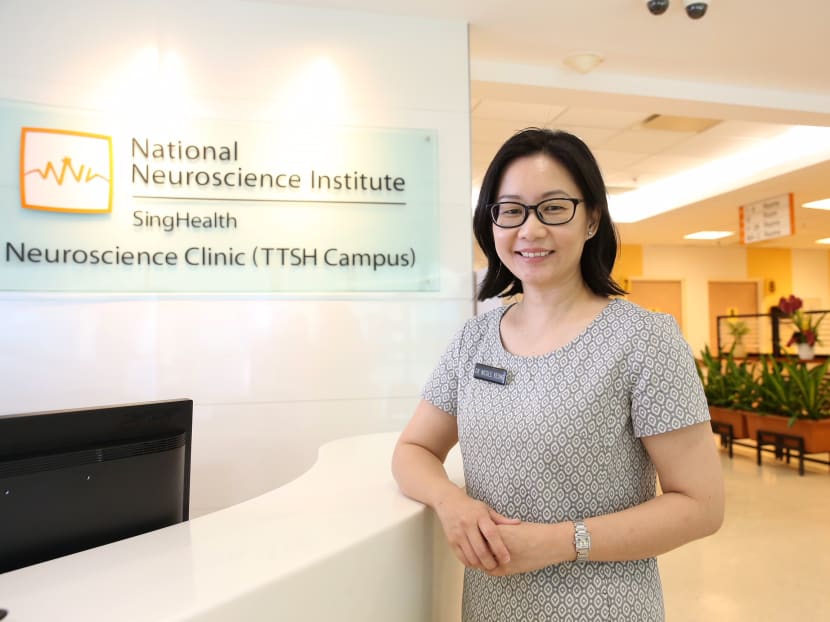More women venturing into 'one of last bastions of male dominance'
SINGAPORE — When she was much younger, Dr Nicole Keong saw how neurosurgeons helped to save her grandfather when he suffered a brain and spinal haemorrhage due to traumatic brain injury.
SINGAPORE — When she was much younger, Dr Nicole Keong saw how neurosurgeons helped to save her grandfather when he suffered a brain and spinal haemorrhage due to traumatic brain injury.
The experience was a major factor behind her decision to pursue the medical specialty and, in 2013, she joined the National Neuroscience Institute (NNI) and became one of Singapore’s first full-fledged female neurosurgeons.
“In medical school (in Newcastle upon Tyne, in the United Kingdom), I was immediately drawn to the neurological sciences because I found it so fascinating and complex, yet so logical,” said Dr Keong, 42. “I was exposed to the surgical environment in my clinical years and loved it immensely. It was the camaraderie that struck me most, that balance of the surgeon being both a team leader and a team player. Everyone had a role, even the medical student, and the team was only as strong as its weakest point.”
Changing cultural and social norms have resulted in women making inroads into “one of the last bastions of male dominance”, said NNI medical director Ng Wai Hoe.
Dr Keong is one of only two full-fledged female neurosurgeons at the NNI. Together with three female neurosurgery residents, they make up 15 per cent of NNI’s pool of 33.
The National University Hospital has, in the past year, seen its first two female neurosurgery residents, who make up 12.5 per cent of the pool that also comprises nine male neurosurgery residents and five male neurosurgeons.
The specialty remains one of the “toughest and most technically demanding surgical fields which requires exceptional physical and mental resilience,” said Associate Professor Ng.
The surgeons work with drills, saws and knives to slice through brains. Mere millimetres could mean a difference between life and death for their patients, and operations could take 36 hours or more.
The higher proportion of women in medical school and a larger female surgical workforce, as well as modern-day fathers being “more engaged and more willing to share childcare responsibilities”, have likely led to the gender breakthrough, said Assoc Prof Ng.
According to figures from the National University of Singapore, just over half (52 per cent) of undergraduates at the Yong Loo Lin School of Medicine in the current academic year are women. The proportion was 44 per cent 10 years ago.
CHOOSING ‘THE HARD LIFE’
Because of the demands of the specialty, the women said passion and the support of their loved ones are crucial.
“Neurosurgery is notorious for its intensity, unpredictability and long hours. Neurosurgical training also requires a long path. It is certainly true that work-life balance may be chaotic and requires significant organisational skills, high levels of motivation and plenty of family support,” said Dr Keong.
Senior neurosurgery resident Wan Kai Rui said a typical day begins before 7am and wraps up at least 12 hours later.
“We often don’t see the sunlight,” said Dr Wan, 30, who is in her fifth year of residency, or post-graduate medical training.
Neurosurgeons are often called upon to flex not only their medical knowhow, but also their social skills. They must be able to convey the outcomes of a surgery realistically and tactfully, said Dr Wan.
“There are cases where, even if we offer a surgery to keep the patient alive, he or she is likely to remain in a vegetative state,” she said. “We are often trying to assess what each family wants, and to relate to their philosophies of life at a time when their emotions are running high.”
Having good mentors and colleagues helps, said fourth-year resident Samantha Ang, 28.
“Although most of our colleagues are male, they don’t see us as any lesser. They treat us like peers and do not assume we have certain limitations just because we are female,” she said.
Dr Ang went into the field after her interest was piqued in secondary school when a friend suffered a brain haemorrhage. She was also inspired by high-profile surgeries performed here to separate conjoined Nepali twins Ganga and Jamuna Shrestha in 2001, and Iranian twins Ladan and Laleh Bijani in 2003.
Dr Keith Goh, the neurosurgeon in both operations, welcomed women into the specialty he calls “the hard life”.
“Since half of the human population is female, I suppose there should be equitable representation in this field of medicine,” he said. There are still significantly more men in neurosurgery, as with the military, he noted.
With more women in the field, patients could have more options when choosing doctors, said Dr Goh. “Sometimes female patients prefer to have a female surgeon, even though it is still debatable whether there is a ‘male’ brain and a ‘female’ brain,” he said.
Dr Keong hopes to see more women taking on the challenge.
“I do not think it would take much to light this path for more females,” she said. “The door is open. I just hope to see many more want to walk through.”







